Weekly Roundup – Machine Learning & Statistics Bookmarks – 02 Feb 2015
This article represents links to some of cool pages on machine learning & statistics that I thought worth sharing. Please feel free to comment/suggest any other webpages that found to be good. Sorry for the typos. Machine Learning & Statistics Bookmarks Andrew NG: One starting to learn machine learning is sure to come across course, paper, or a web page related with Andrew NG, an Associate Professor at Stanford; Chief Scientist of Baidu; and Chairman and Co-Founder of Coursera. Some of the pages sighting his work are following: Courses Publications Research Andrew W. Moore: Great set of tutorials by Andrew D. More, who is Dean of the School of Computer …
Machine Learning – 9 Most Common Usecases for Higher Business Growth
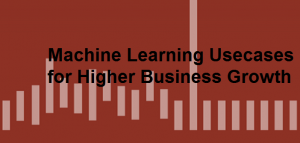
This article represents some of the most common use cases of machine learning algorithms which has been found to impact business growth (in terms of revenues) in a positive manner. These usecases could be most commonly seen with all businesses which are running some or the other form of ecommerce site to support one or more aspects of their business. I have tried and provide information regarding which algorithm (or class of algorithm) could be used to come up with a solution for these usecases. Please feel free to comment/suggest if I missed to mention one or more important points. Also, sorry for the typos. Following are different areas, at …
Top 4 Machine Learning Usecases for Energy Forecasting

This article represents top 4 machine learning usecases for energy forecasting. Please feel free to comment/suggest if I missed to mention one or more important points. Also, sorry for the typos. Machine Learning Usecases for Energy Forecasting Following are different usecases in relation with energy management where machine learning could be used for probabilistic energy forecasting. For those who are new to probabilistic forecasting, here is the definition from Wikipedia: Probabilistic forecasting summarises what is known, or opinions about, future events. In contrast to a single-valued forecasts (such as forecasting that the maximum temperature at given site on a given day will be 23 degrees Celsius or that the result …
Big Data – Free Hadoop Online Training Course from MapR

This article represents quick information on free Hadoop online on-demand training that has been announced yesterday by MapR Technologies, the Hadoop distribution specialist. I took Hadoop Essentials course and I must say that I liked the training session. The downside of these training sessions is that you would soon hit MapR related technologies in relation with MapReduce, HBase, HDFS. However, that said, its worth giving a shot. Please feel free to comment/suggest if I missed to mention one or more important points. Also, sorry for the typos. Training Courses for Hadoop Developer, Hadoop Administrator & Data Analyst The training includes topics related with a range of Hadoop technologies for …
Machine Learning Usecases for Pinterest.com & related Kosei Acquisition

This article represents thoughts on recent acquisition of Kosei, a commerce recommendation system, by Pinterest.com. Please feel free to comment/suggest if I missed to mention one or more important points. Also, sorry for the typos. Following are the key points described later in this article: How could Machine Learning help Pinterest fuel its overall growth? How could Kosei help Pinterest.com? How could Machine Learning help Pinterest fuel its overall growth? Yet another acquisiton in the space of machine learning, Pinterest.com acquires Kosei to achieve some of the following objective: Better ad targeting for greater mometization from ad clicks. This looks to be a case of identifying users clusters based …
Data Science – List of Common Machine Learning Problems with Examples
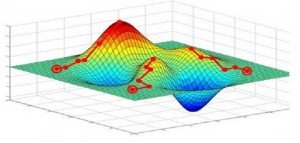
This article represents quick examples for 5 different classes of machine learning problems/tasks. Please feel free to comment/suggest if I missed to mention one or more important points. Also, sorry for the typos. Following is a set of 5 key machine learning problems/tasks whose examples have been listed later in this article: Regression Classification Clustering Association Rules Artificial Neural Networks Examples – Regression Models Real Estate – Housing price estimation Financial – Stock price estimation Insurance – Estimate medical care expenses Sales & Marketing – Sales vs Ad spend Company growth estimation Examples – Classification Models Following are four different algorithms whose examples have been listed below: Naive …
Cheat Sheet – 10 Machine Learning Algorithms & R Commands
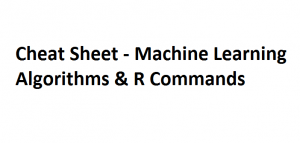
This article lists down 10 popular machine learning algorithms and related R commands (& package information) that could be used to create respective models. The objective is to represent a quick reference page for beginners/intermediate level R programmers who working on machine learning related problems. Please feel free to comment/suggest if I missed to mention one or more important points. Also, sorry for the typos. Following are the different ML algorithms included in this article: Linear regression Logistic Regression K-Means Clustering K-Nearest Neighbors (KNN) Classification Naive Bayes Classification Decison Trees Support Vector Machine (SVM) Artifical Neural Network (ANN) Apriori AdaBoost Cheat Sheet – ML Algorithms & R Commands Linear regression: …
Top 4 Javascript Frameworks to Watch out in 2015
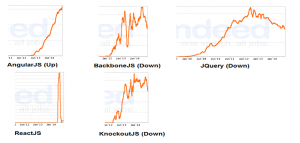
This article presents analytics on popular Javascript frameworks and call out top 4 javascript frameworks (event-handling) one should watch out in 2015. From the analysis below, AngularJS Rocks!!! Please feel free to comment/suggest if I missed to mention one or more important points. Also, sorry for the typos. Following are the top 7 Javascript frameworks that are considered in this analysis: AngularJS JQuery BackboneJS KnockoutJS ReactJS MeteorJS EmberJS The analytics presents data based on trends captured from Google Trends and Indeed.com job trends. Please feel free to suggest any javascript frameworks that I may have missed. From the analysis below, following are top 4 javascript frameworks that you may want to watch out …
ReactJS – Component-oriented UI Design Explained with Calculator Example
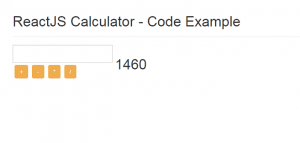
This article represents high level concepts with code examples used to create a trivial calculator using ReactJS. Please feel free to comment/suggest if I missed to mention one or more important points. Also, sorry for the typos. Following are the key points described later in this article: Design & Analysis – ReactJS Calculator Code Sample – ReactJS Calculator Design & Analysis – ReactJS Calculator Calculator consists of three components, one (Operation) of which is reusable component. Following are these components: InputField: This represents textfield which allows uses to enter the number Operation: This component represents operation such as addtion (+), subtraction (-), multiplication (*), division (/) in the example …
Sublime ReactJS Bootstrap HelloWorld Template for Quickstart
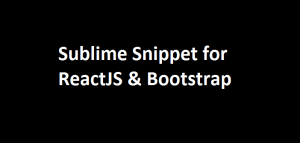
This article represents Sublime Snippet for quickstarting your ReactJS learning sessions with help of ReactJS-Bootstrap code for HelloWorld. It comes very handy for me and thought to share with you. Please feel free to comment/suggest if I missed to mention one or more important points. Also, sorry for the typos. Code Sample – Sublime Snippet for ReactJS Bootstrap Hello World Template In your sublime editor, go to Tools > New Snippet, paste the code below and save. Open a new file, save it as html file, write “rjshello” and press CTRL+Space bar. That is it. You would get the ReactJS Hello World code for quickstarting your project. The code …
Java – How to Get Users Tweets using Twitter HBC Http Client

This article represents code samples which could be used to retrieve users tweets for one or more Twitter users, using Twitter HBC Java client. Please feel free to comment/suggest if I missed to mention one or more important points. Also, sorry for the typos. Following are the key points described later in this article: Key Steps in Retrieving the Users Tweets Code Sample – Get User Tweets Key Steps in Retrieving the Users Tweets Following are key steps required to be taken to retrieve users tweets: Get consumer key and access tokens details Determine userId for users for whom you want to get the tweets as they appear. For test …
Java – How to Get Started with Twitter HBC Streaming API

This article represents instructions on how to get started with HBC, A Java HTTP client, for consuming Twitter’s Streaming API. Please feel free to comment/suggest if I missed to mention one or more important points. Also, sorry for the typos. Following are the key points described later in this article: How to get Twitter Consumer/Access Token Keys Instructions to Get Started with HBC How to get Twitter Consumer/Access Token Keys Before getting started with HBC API for integrating with Twitter API, make sure that you have acquired following four details from Twitter: Consumer Key Consumer Secret Access Token Access Secret Token All of the above keys could be started from …
Maven – How to Build Jar Files and Obtain Dependencies
This article represents facts on what would it take to build one or more jar files for a given framework/library using Maven, provided the framework’s downloadable files consisted of pom.xml. Please feel free to comment/suggest if I missed to mention one or more important points. Also, sorry for the typos. So far, whenever I came across pom.xml file in the framework that I downloaded in order to get the jar file, I hated it. I used to, then, go to internet and get the compiled jar file(s) for the framework/library. And, good thing is that I have been able to get my work done. This was purely out of my …
API – How to Get Started with Facebook API Integration
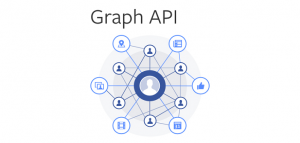
This article represents steps to get started with Facebook Graph API. In later articles, I shall explain how to integrate using Java and maybe other programming languages. The primary reason I am hooked to Facebook integration these days is my need for getting exploratory data from facebook for data analysis for my Big Data projects. Before getting onto use framework such as RestFB, it is recommended to play with these APIs in the Facebook-provided playground. I shall be talking in detail about how to get started with RestFB in later articles. Please feel free to comment/suggest if I missed to mention one or more important points. Also, sorry for the …
Java – How to Get Company Updates using LinkedIn API

This article represents code samples and changes that need to be done in original Linkedin-J framework (open-source) to get company updates of different types such as following: Job Posting Status Updates New Product Please feel free to comment/suggest if I missed to mention one or more important points. Also, sorry for the typos. Code Samples & Steps to Get Company Updates Following files need to be changed along with mentioned changes: LinkedinApiUrls.properties: Following code needs to be added under APIs mentioned under companies: com.google.code.linkedinapi.client.getCompanyStatusUpdates=http://api.linkedin.com/v1/companies/{id}/updates{queryParameters} LinkedInApiUrls.java: Following code needs to be added: public static final String GET_COMPANY_STATUS_UPDATES = linkedInApiUrls.getProperty(“com.google.code.linkedinapi.client.getCompanyStatusUpdates”); CompaniesApiClient.java: Following APIs need to be added: /** * Gets the …
Java – How to Scrape Web using Multi-threading (ExecutorService)

This article represents code examples on how to Scrape multiple URLs at once using Java Multi-threading API such as ExecutorService. The sole reason why I have been doing scraping lately is the need to get data from web to apply data analytics/science (machine learning algorithms) and extract knowledge from the data. Please feel free to comment/suggest if I missed to mention one or more important points. Also, sorry for the typos. Following are three different methods whose code samples have been presented below: scrapeURLs that takes input file consisting of URLs to be scraped and output file where the output needs to be written scrapeIndividualURLs which takes as an argument, URL …
I found it very helpful. However the differences are not too understandable for me